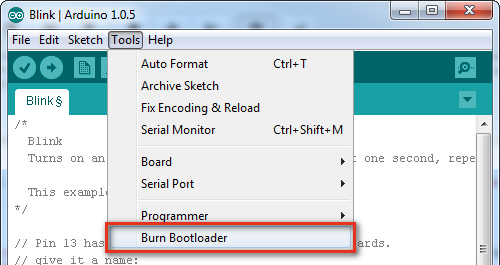
Download Program At90s2313 With Arduino Ide
Buy HonsCreat USBasp AVR Programming Programmer Device for ATMEL. A Set AVR ISP USBtinyISP Programmer For Arduino Bootloader USB Download Interface $10.99. Arduino Uno R3 Development Board, Kit Microcontroller Based on. AT90S1200 AT90S2313 AT90S2333 AT90S2343 AT90S4414 AT90S4433.
Since we will be using the Arduino Uno as an ISP programmer, we first have to upload a sketch that will be responsible for receiving data through the serial port (USART) and outputting it correctly to the target microcontroller through their SPI ports. So, open up the Arduino IDE, go to File>Examples>ArduinoISP. Once the sketch is open, on the top of the file, some comments are made on pin names and connections. Those will be addressed on the next step, but make sure they match with the tutorial.
He intended to produce a car to rival the size, power, and luxury of top European brands such as,. D model j vagona.
Connect your arduino and fire the Upload button away. It takes a little more tha usual but don't worry. For this first step you will need the following materials: • Jumper wires of saveral colors (yes they matter);• 01 RED LED• 01 YELLOW LED• 02 LEDs of different colors, your choice (we are using blue and white)• 01 10uF electrolytic capacitor• 04 200 ohm 1/8W resistors These other materials are project-dependent. In our case, we are going for a solution that uses a 8 MHz crystal and an internal clock with the same value. Therefore: • 01 8 MHz crystal• 02 20 pF ceramic capacitors Hook all the components together according to the picture.
Do notice that for each trail that receives one of the lead of the crystal, there is a ceramic capacitor connecting this trail to the ground trail. The LEDs' anodes are identified by the slight curve their leads have. Pay attention to the white LED, the one to be blinked by the code that will be loaded. Due to a software limitation, that doesn't allow component flipping, the LED ended up being crossed. The electrolytic capacitor is polarized, therefore make sure you have the longer lead connected to RESET while the smaller one is connected to GND.
This will filter out the automatic reset signal, disabling it. A good advice is to keep the jumper wires in the same color code as the one shown in the picture. This helps further hardware debugging. Since you have used the Arduino IDE to load the ArduinoISP sketch to your Arduino board, this means that you already have AVRDUDE installed in your computer. AVRDUDE is a command line application that intermediates the firmware loading process on your computer side.
Long story short, AVRDUDE reads the.hex file produced by the compilation and translation process and queues it in order to output it correctly through the serial port. From there the USB-serial converter on your Uno board (the black square next to the USB port) reads it from the USB line, sends it to the ATMEGA on the Arduino Uno board and finally outputs it through SPI to the target microcontroller.
One of the coolest features of Atmel Studio is the support to external tools, like the AVRDUDE itself. Basically, Atmel Studio leaves this open enough to customization, that with the press of a button, you can perform a full command line program call and deploy your firmware to the target microcontroller. Enough said, Open Atmel Studio 6.
Go to Tools>External Tools Fill in the fields as the picture shows. The Command field is to be filled with the location avrdude in your machine, in my case: C: Program Files (x86) Arduino hardware tools avr bin avrdude.exe As to the Arguments field, fill in with the following line: -U lfuse:w:0xe6:m -U hfuse:w:0xd9:m -e -v -patmega328p -carduino -PCOM2 -b19200 -D -Uflash:w:'$(ProjectDir)Debug $(ItemFileName).hex':i -C'C: Program Files (x86) Arduino hardware tools avr etc avrdude.conf' Those are the firmware deployment arguments or information to be interpreted by AVRDUDE and converted into write actions. In this line there are three main things to be altered: • The COM port you are using your Arduino Uno on. In order to check, go to Device Manager>COM&LPT Ports and you should see Arduino listed. • The file path where to find avrdude.conf.
A simple windows search should get you going with that. • The fuse bits value, depending on how you have planned your projects configuration.
Simply change the hex value in the middle of -U lfuse:w:0xe6:m and the fuse name you intend to configure. Pay attention to the portion of the line with the.hex in the middle. That's the reference in the arguments to where AVRDUDE will look for the file.
$(ProjectDir) and $(ItemFileName) are bash script variables and will be replaced according to your project name and location propely once the &Deploy action is called. The other arguments are just guidelines to AVRDUDE concerning the target microcontroller and where to find the firmware file and the AVRDUDE configuration file. Basically, this line of arguments makes AVRDUDE execute 4 write operations: • The first writes the low fuse of the AVR • The second, the high fuse • The third operation is a full flash memory erase, as way to avoid write errors • And the fourth a full flash memory write with the firmware For a full list of arguments, go to.